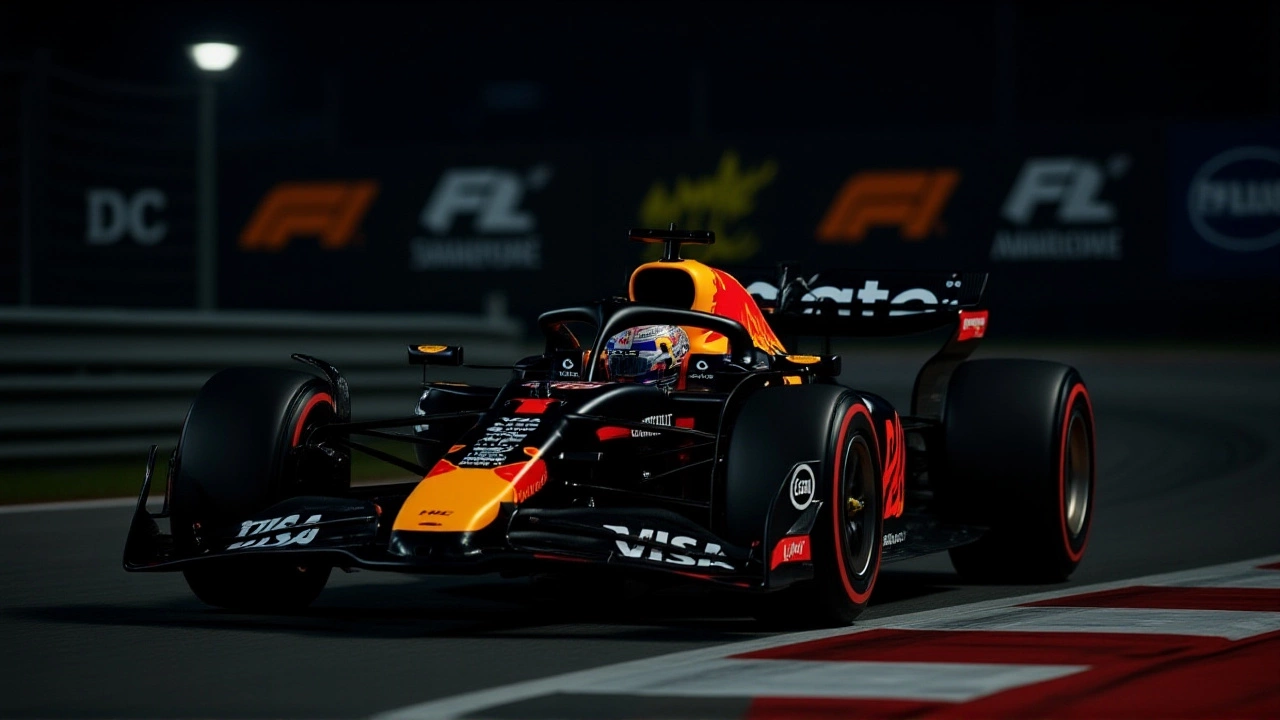Marina Bay Circuit – The Heartbeat of Singapore’s F1 Night Race
When talking about Marina Bay Circuit, the 5.063‑km street track that winds through Singapore’s skyline and hosts the thrilling night‑time Singapore Grand Prix. Also known as Singapore Street Circuit, it challenges drivers with tight corners, high‑speed straights, and humid conditions. Formula 1, the premier global motorsport series relies on this venue to showcase night racing, while the Singapore Grand Prix, an annual F1 event renowned for its spectacular city‑light backdrop draws fans worldwide. Marina Bay Circuit isn’t just a location; it’s a complex system that demands precise car setup, tyre strategy, and driver skill.
Why the Circuit Demands Unique Race Strategy
The street circuit, a temporary race track laid out on city streets nature forces teams to balance downforce and straight‑line speed. The tight Turn 1 and the long back‑straight to Turn 10 create a push‑pull effect on aerodynamics. Because the race runs under artificial lighting, the track temperature remains high, which speeds up tyre wear. That means tyre management, the practice of preserving tyre life while maintaining grip becomes a critical factor in the final standings. Drivers who can keep a steady pace without over‑cooking their tyres often climb the leaderboard in the latter stages.
Another layer of complexity is the Marina Bay Circuit’s layout changes over the years. Minor adjustments to chicane angles or kerb heights can shift the optimal braking points, forcing engineers to continually update their car set‑ups. This dynamic relationship between circuit evolution and vehicle configuration illustrates the triple: Marina Bay Circuit influences car setup, car setup affects tyre wear, and tyre wear impacts race outcome. Fans watching the race can see these subtle changes manifest in overtaking manoeuvres and pit‑stop timing.
Beyond the technical side, the circuit’s urban setting adds a cultural flavor. The illuminated skyline, the Marina Bay Sands backdrop, and the roaring crowds create an atmosphere unlike any other Grand Prix. This blend of sport and city life makes the Marina Bay Circuit a tourist magnet, boosting local economy and giving drivers a unique visual experience. The event’s night schedule also means that global broadcasters can deliver live coverage to prime‑time audiences across different continents.
For newcomers, grasping the circuit’s quirks can feel overwhelming. However, breaking it down into three core elements—track layout, tyre strategy, and atmospheric conditions—helps simplify the learning curve. The layout dictates where drivers must brake hard and where they can unleash the engine. Tyre strategy determines how long each stint can last before a pit‑stop is necessary. Atmospheric conditions, especially humidity and lighting, affect grip levels and driver visibility. Understanding how these factors intertwine gives fans a richer appreciation when they watch the race.
Team engineers often run simulations focusing on the Marina Bay Circuit’s high‑downforce sections, such as the Turn 13 hairpin. These simulations reveal how small aerodynamic tweaks can shave tenths of a second per lap, which adds up over a 61‑lap race. Meanwhile, drivers practice on the actual circuit during pre‑season testing to fine‑tune their braking points. This collaborative effort between engineers and drivers showcases the importance of data‑driven decisions on a street circuit where margins are razor‑thin.
Looking ahead, the Marina Bay Circuit is likely to keep evolving. Organisers have hinted at future layout revisions to improve safety and increase overtaking opportunities. As the circuit changes, expect teams to adapt their approaches, keeping the competition fresh and exciting. Whether you’re a hardcore F1 fan or just curious about what makes night racing special, the Marina Bay Circuit offers a case study in how a city can transform into a world‑class racing venue.
Below, you’ll find a curated collection of articles that dive deeper into the circuit’s design, race‑day strategies, driver experiences, and the economic impact of the Singapore Grand Prix. Use them as a guide to expand your knowledge and get ready for the next thrilling race under the Singapore lights.
- Kaius Farrell
- 0 Comments
George Russell grabs Singapore GP pole, beats Verstappen and Piastri
George Russell clinches pole for the 2025 Singapore Grand Prix, edging Verstappen and Piastri in a nail‑biting qualifying at Marina Bay Circuit. Young talents shine, while Williams faces disqualification.
View More